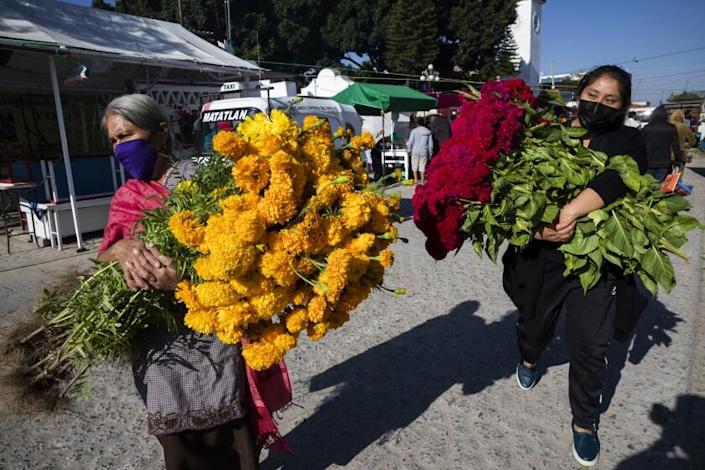On the eve of the Day of the Dead, Maria Santiago stood in the back of a moving pickup truck with her hair whipping through the air, heading toward the agave fields that her father had owned in this small town outside Oaxaca City.

She meandered through the plantation with her mother and brother-in-law, avoiding the prickly plants, to collect small yellow flowers for their altar.
Santiago, a 25-year-old nursing assistant in Los Angeles, had flown to her hometown to celebrate her first Day of the Dead without her father, a construction worker who died last January from COVID-19. In Santiago Matatlán, where residents will keep their doors and windows open to invite the spirits of their ancestors, Santiago’s grandmother had taught her it was especially important to honor the recently deceased.
“If my dad comes, I want to give him a great welcome,” said Santiago. “It’s our first year without him. We want Father to enjoy the day like when he was alive.”
Tourists have long flocked to Mexico for the Day of the Dead, a holiday in which families build elaborate ofrendas, or altars, laden with fruits, bread and hot chocolate, and visit the graves of loved ones in cemeteries.
But in certain parts of the country with indigenous communities, the Day of the Dead, which stems from pre-Hispanic traditions, is considered so sacred that it brings those who left Mexico back home.
Immigrants from states like Oaxaca, Michoacán, Guerrero and Puebla may return if they have the means — a trip that’s particularly poignant this year for those who couldn’t travel in 2020 because of pandemic restrictions.

It’s unclear exactly how many go back, but experts say that some tiny villages swell in size. Immigrants who cannot travel often send money to those planning the festivities, said Xóchitl Flores-Marcial, a Zapotec historian at Cal State Northridge, who compared the season to Thanksgiving travel.
CLICK HERE FOR FULL ARTICLE BY Leila Miller ON LOS ANGELES TIMES
TYT Newsroom


